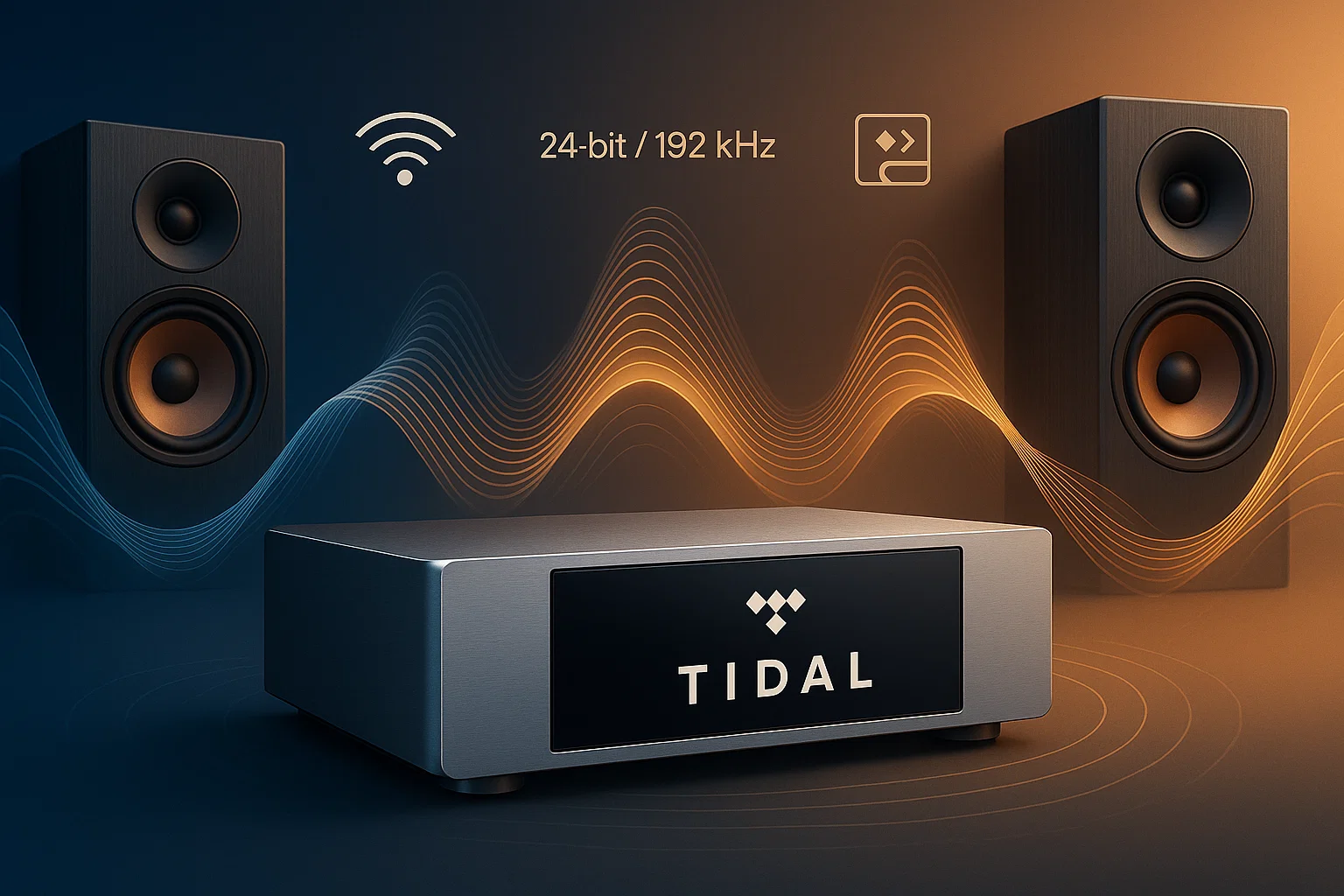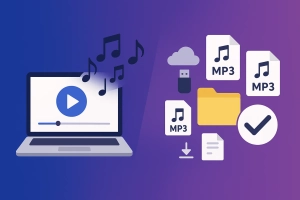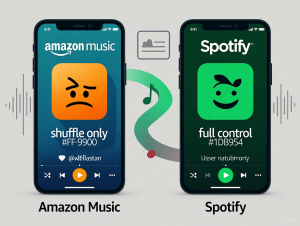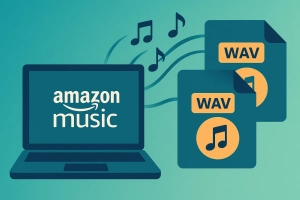Last month, I finally pulled the trigger on a Tidal HiFi subscription. I’d heard people rave about the sound quality for years. Excitedly, I queued up one of my favorite albums—something I’d listened to hundreds of times on Spotify—and hit play through my Bluetooth speaker.
And… I couldn’t tell the difference. At all.
That’s when it hit me: paying for lossless audio but streaming through a $50 Bluetooth speaker is like buying a Ferrari and only driving it in a school zone. You need the right streamer to actually hear what you’re paying for.
So here’s what I figured out after testing several options, reading way too many forum threads, and maybe spending a bit more than I initially planned. If you’re serious about getting the most from your Tidal subscription, this guide will help you find the perfect streamer for your budget and setup.
In This Article:
What Makes a Great Streamer for Tidal?
Before we dive into specific models, let’s talk about what actually matters when you’re shopping for a Tidal streamer. Spoiler: it’s not just about supporting high-res audio.
Audio Quality Support
Tidal offers three main quality tiers: HiFi (16-bit/44.1kHz CD quality), Master Quality (formerly MQA, now being phased out), and HiRes FLAC (up to 24-bit/192kHz). Your streamer needs to handle at least 24-bit/192kHz to fully unlock Tidal’s potential.
But here’s what most reviewers don’t tell you: Tidal Connect matters more than you think. It’s Tidal’s proprietary streaming protocol that delivers bit-perfect audio directly from Tidal’s servers to your device. Compare that to Bluetooth or even standard Chromecast, which compress the signal.
I tested the same track through Tidal Connect and Bluetooth on my setup. The Tidal Connect version had clearer instrument separation and a wider soundstage. Not night and day, but definitely there. Actually—wait, let me be more specific about this because the difference varies depending on what you’re listening to. With jazz and acoustic stuff, you really notice it. EDM or heavily produced pop? Less obvious.
The DAC Question
Here’s something I wish I’d known earlier: not all streamers are created equal when it comes to their built-in Digital-to-Analog Converter (DAC).
Some streamers, like the WiiM Pro, are designed to work with an external DAC. They’re basically network transports—they handle the streaming part but pass the digital signal to a separate DAC for conversion. Others, like the Cambridge Audio CXN V2, have excellent internal DACs built in.
So when do you need an external DAC?
Honestly, this confused me at first too. The general rule I’ve settled on: if you’re buying a budget streamer (under $300), you’ll probably want one. If you’re spending $500+, the internal DAC should be good enough. The sweet spot? WiiM Pro ($149) paired with a Topping E30 II ($150) gives you better sound than most $500 all-in-one streamers.
That’s actually my current home setup, and I’m pretty happy with it. Though I keep eyeing that CXN V2…
Connectivity & Compatibility
Ethernet beats WiFi every time for audio streaming. I know it’s less convenient, but trust me—after dealing with dropouts during a listening session, you’ll appreciate a wired connection.
If you must use WiFi (and I get it, not everyone can run cables), make sure your streamer supports dual-band (2.4GHz and 5GHz). The 5GHz band is way more stable for streaming.
Multi-room capability is another feature worth considering. Or… maybe not? Depends on your situation. Systems like BluOS (used by Bluesound and NAD) and StreamMagic (Cambridge Audio) let you sync music across multiple rooms. I thought it was a gimmick until I actually used it during a dinner party. Turns out having the same music playing seamlessly across your house is pretty cool. But if you’re just listening in one room, don’t pay extra for this feature.
Best Tidal Streamers by Budget
Right. Let’s get to the actual recommendations. I’ve organized these by price because, let’s face it, that’s usually the first question.
Budget Champions: Under $600
#1. WiiM Pro ($149)
This little box punches way above its weight class. I bought it as a “temporary” solution eight months ago. Still using it. Turns out “temporary” is pretty flexible when something just works.
What’s Great:
- Supports Tidal Connect, Spotify Connect, AirPlay 2
- Handles 24-bit/192kHz audio
- WiiM Home app is intuitive (surprisingly so for the price)
The Catch: Needs an external DAC. My setup: WiiM Pro + Topping E30 II (~$300 total). Sounds better than the $549 Bluesound Node. At least to my ears.
Best For: Budget audiophiles willing to add a separate DAC.
#2. Bluesound Node (~$549)
The “I just want it to work” option. Setup takes five minutes. BluOS app is mature and stable—no quirks, no crashes.
What’s Great:
- Plug-and-play experience
- BluOS multi-room ecosystem
- Built-in DAC is respectable
- All major streaming services supported
The Catch: Internal DAC is the weak link. Many owners add an external DAC anyway, which kind of defeats the simplicity angle.
Best For: Simplicity seekers. Multi-room BluOS users.
#3. Cambridge Audio AXN10 (~$499)
Uses StreamMagic platform—noticeably more responsive than BluOS, in my experience. Sound signature is airy, precise, rhythmic. Excels with acoustic music and jazz, though it handles everything well.
Built-in ESS ES9033Q DAC. Solid performer for the money.
Best For: Cambridge Audio fans. Simple setup, no DIY required.
Mid-Range Excellence: $600-$1500
#4. Cambridge Audio CXN V2 (~$999)
My pick for “best overall.” If I had $1000 to spend, I’d buy this. Actually, scratch that—when I have $1000 to spend (because I’m definitely upgrading from my WiiM setup eventually), this is what I’m getting.
Exceptional build quality—brushed aluminum, substantial weight. Sounds fantastic with dual Wolfson WM8740 DAC chips. StreamMagic interface is intuitive and fast.
Why This Over Naim Uniti Atom: The Atom costs $3,799 vs $999. Is it better? Yes. Is it $2,800 better? Not in my opinion. Most people would be thrilled with the CXN V2. Unless you’ve got high-end speakers and a treated room, you probably won’t fully appreciate what the Atom offers anyway.
Best For: Serious music lovers wanting excellent sound without crazy expense.
#5. NAD C 658 (~$1,199)
Unique feature: Dirac Live room correction. Analyzes your room and compensates for acoustic issues. Also uses BluOS for seamless ecosystem integration.
The Downside: Setup takes ~30 minutes with included microphone. Worth it if you’re into tweaking, maybe overkill if you just want to stream music without fuss.
Best For: Challenging room acoustics. NAD/BluOS fans. People who like optimizing things.
#6. Cambridge Audio Evo 75 (~$1,299)
Streaming amplifier—streamer + 75W amp in one chassis. Seamless integration. Just connect speakers and you’re done. Sound quality matches CXN V2.
Best For: New system builds. Minimalists.
High-End Options: $1500+
Okay, full disclosure before we go further: we’re entering diminishing returns territory here.
The improvements are real but incremental. Like, you’ll hear the difference if you sit down and really listen, but is it worth triple or quadruple the price? That’s debatable. Most people would be perfectly happy—no, thrilled—with something from the mid-range section. But hey, if you’ve got the budget and the system to match, let’s talk high-end.
#7. Naim Uniti Atom (~$3,799)
Naim’s “entry-level” all-in-one at $4,000. Legitimately excellent. Combines streamer, DAC, 40W amp with Naim’s punchy, rhythmic sound.
Is It Worth It? If you have to ask, probably not. For most setups, Cambridge CXN V2 gets you 90% there for one-quarter the price.
Best For: Naim enthusiasts. High-end system owners.
#8. Technics SL-G700M2 (~$3,499)
Legendary Japanese engineering. Supports every format imaginable plus Chromecast and CD player. Sound is detailed, accurate… maybe a touch clinical? Some people love that precision. Others find it a bit sterile. Depends on your taste.
Best For: Format compatibility obsessives. Technics fans.
#9. Linn Klimax DSM (~$22,000+)
If you’re considering a $22,000 streamer, you don’t need my advice. For everyone else: sounds incredible, build quality extraordinary. But the law of diminishing returns is fully active here.
Best For: Money-no-object crowd.
Quick Comparison Table
| Streamer | Price | Tidal Connect | Max Quality | DAC Type | Best For |
|---|---|---|---|---|---|
| WiiM Pro | $149 | ✅ | 24/192 | Needs External | Budget + DIY |
| Bluesound Node | $549 | ✅ | 24/192 | Internal (Good) | Easy Setup |
| Cambridge CXN V2 | $999 | ✅ | 24/192 | Internal (Excellent) | Best Overall |
| NAD C 658 | $1,199 | ✅ | 24/192 | Internal (Good) | Room Correction |
| Naim Uniti Atom | $3,799 | ✅ | 24/384 | Internal (Premium) | High-End Sound |
The sweet spot for most people? I’d say somewhere between $500 and $1,200. Below that, you’re compromising on either features or sound quality. Above that, you’re paying increasingly more for increasingly smaller improvements.
Unless you’re an absolute die-hard audiophile with matching gear, that is. Then by all means, go wild.
The Offline Solution: Cinch Audio Recorder
Okay, so you’ve got your Tidal streamer set up. Everything’s working great. You’re enjoying lossless audio in all its glory.
Most people’s needs end there, and that’s totally fine. Honestly, I’m perfectly happy with my streaming setup for everyday listening at home.
But—and here’s where things get annoying—not every situation is ideal for streaming.
When Streaming Isn’t Enough
Last month, my friend called me in a panic. He’d been downloading his favorite albums on Tidal for a road trip—his car’s in a mountain area with spotty cell service. Then his subscription expired a few days early because he’d forgotten to update his credit card. Suddenly, all his “downloaded” music was gone. Locked behind DRM. Ouch.
I’ve also run into this personally:
- Scenario 1: My car’s USB system doesn’t support Tidal Connect. It just reads MP3 files from a USB stick. Streaming isn’t an option.
- Scenario 2: Weekend at a friend’s cabin. No WiFi. Want to listen to music on their system.
- Scenario 3: Trying to mix Tidal tracks in DJ software (Rekordbox, Serato). Can’t—they’re DRM-protected.
Look, official Tidal downloads work great if you’re always connected and never let your subscription lapse. But let’s be real—that’s not always the case.
Introducing Cinch Audio Recorder
That’s when I started recommending Cinch Audio Recorder.
And no, before you ask—this isn’t a replacement for your streamer. It’s more like a backup plan for situations where streaming isn’t practical or reliable.
Here’s What It Does: Cinch records audio playing on your computer and saves it as MP3, M4A, WAV, FLAC, or lossless ALAC/AIFF files. It automatically detects track boundaries, splits songs, and even pulls ID3 tags (artist, album, cover art) from Tidal.
Why It Actually Helps:
- Records Tidal HiFi audio in original quality (up to 320kbps MP3 or lossless FLAC)
- Works with both free and paid Tidal accounts
- No monthly subscription—$25.99 one-time purchase
- Converts music to formats like MP3 or M4A that work anywhere
- Lets you keep music even after canceling Tidal
- Bonus: also works with Spotify, Apple Music, Amazon Music, and others
My Use Case: I keep my streaming setup for home listening—that hasn’t changed. But I used Cinch to record a “best of” playlist before a two-week road trip. Loaded it onto a USB stick, and it played perfectly in my rental car. No DRM restrictions, no worrying about cellular coverage, no subscription anxiety.
Another friend uses it to transfer Apple Music tracks to USB for his car—his car stereo doesn’t support CarPlay. Same idea, different service. Works the same way.
What I Like:
- Simple interface that doesn’t overwhelm you with options
- Auto-detects song changes (no manual splitting needed)
- Can export ringtones from any recorded track
- Ad filter feature for free Spotify users (removes audio ads automatically)
Quick Tip: Set the output format to FLAC if you want archive-quality files that match Tidal’s lossless quality. Use MP3 (320kbps) if you need smaller files for a portable player with limited storage. I usually go with FLAC for archiving and convert to MP3 later if needed.
How It Works
Using Cinch is straightforward:
- Install the software on your Windows or Mac computer
- Open Tidal (or any other music service) in your browser or app
- Click Record in Cinch
- Play your music—Cinch captures everything
- Stop when done. Your tracks are saved with full metadata.
It’s not “downloading” in the traditional sense—it’s more like recording what’s coming through your sound card. Think of it as the digital equivalent of recording a vinyl record to cassette tape, except the quality is lossless.
Honestly, the first time I used it, I was surprised how seamless it was. No complex settings, no configuration headaches.
Because of how it works, you can’t get in trouble for using it. It’s similar to screen recording a video you’re watching—you’re just capturing what’s already playing on your device.
The interface is clean and intuitive. You’re not drowning in settings you don’t understand.
Get Cinch Audio Recorder
Download Cinch Audio Recorder:
Windows and Mac versions available. The free trial lets you record the first minute of each track—enough to test quality and make sure it works with your setup.
One-time purchase of $25.99 unlocks unlimited recording. No monthly fees, no subscriptions. Just pay once and use it whenever you need it.
If you’re curious about why recording is different from traditional downloading, I found this explanation of DRM and recording vs downloading really helpful.
Common Mistakes When Choosing a Tidal Streamer
After helping several friends set up their systems (and making a few mistakes myself), I’ve noticed some patterns. Let me save you some trouble and maybe some money.
Mistake #1: Ignoring Your Existing System
Biggest mistake I see: someone buys a $3,000 streamer and pairs it with $300 speakers. Don’t do this.
Your audio chain is only as strong as its weakest link. My Rule: Streamer should be 20-30% of total system cost. Got $2,000 speakers + amp? Look at the $500-$800 streamer range.
I mean, you can go higher if you want, but you probably won’t hear the difference until you upgrade the rest of your system.
Mistake #2: Overlooking the DAC Requirement
Common conversation: “I bought the WiiM Pro! But it sounds terrible.” “Did you connect an external DAC?” “…was I supposed to?”
Yes. WiiM Pro is a network transport—needs a DAC for analog conversion.
Need External DAC: Streamer under $300 marketed as “transport” Internal DAC Fine: Streamer $500+, no audible issues
Reddit audiophiles swear by WiiM Pro + Topping E30 II ($300 total). Excellent value.
Mistake #3: Buying for Specs, Not Experience
384kHz! DSD512! Eight cores!
Look, I get it. Specs are easy to compare. Numbers are concrete. But can you actually hear the difference between 192kHz and 384kHz? Be honest with yourself. Most people can’t in blind tests. I certainly can’t.
What Actually Matters:
- App ecosystem (you’ll interact with this daily)
- Build quality (it should feel solid, not cheap)
- System integration (does it play nice with your other gear?)
- Software updates (companies that support their products long-term)
My advice: a $1,000 streamer with a great app beats a $2,000 one with a clunky interface every time. You’ll use the interface way more than you’ll benefit from marginal spec improvements.
Troubleshooting: When Tidal Won’t Connect
Look, streaming isn’t always perfect. Here are the fixes that actually work:
Tidal Connect Dropping Out?
- Switch to Ethernet (solved 90% of my issues)
- Use 5GHz WiFi band
- Restart streamer and router (yeah, the classic “turn it off and on again”)
- Update firmware
Android Bug: Version 2.146 had connection issues. Fixed in 2.147+. If you’re still on 2.146, update your app.
Can’t Find Streamer?
- Same WiFi network? (easy to miss if you have a guest network)
- Disable VPN temporarily
- Check firewall settings
Audio Buffering? Lower Tidal quality temporarily. If that fixes it, it’s a network issue, not your streamer. Check Tidal support for device-specific guides.
Final Thoughts
After testing way too many streamers and reading countless forum threads (seriously, I need to get out more), here’s what I’d recommend based on budget:
Budget Pick: WiiM Pro + Topping E30 II ($299 total) – Unbeatable value if you don’t mind two boxes
Sweet Spot: Cambridge Audio CXN V2 ($999) – Best all-around streamer for most setups
Money No Object: Naim Uniti Atom ($3,799) – Premium sound and build, but only if your system can take advantage of it
Honestly, I think the $500-$1,200 range is where most people should shop. Anything less, you’re making compromises. Anything more, you’re paying exponentially more for incrementally better sound.
Is that always a bad thing? No. But be honest about your system, your room, and your ears.
Your room acoustics, speaker placement, and system matching probably matter more than the exact streamer you choose. I’ve heard incredible sound from modest streamers in well-treated rooms, and disappointing sound from expensive gear in problematic spaces. That’s something worth thinking about before you drop serious cash on a high-end streamer.
Get a decent streamer, set it up properly, and then just enjoy your music. That’s the whole point, right?
Once you’ve nailed down your streamer choice, the next rabbit hole is speaker positioning. But that’s a topic for another day. (I’m still figuring out my own setup, to be honest.)
FAQs About Tidal Streamers
Q: Do I need a Tidal HiFi subscription to use these streamers?
A: Technically no—Tidal’s standard plan works with any streamer. But you’d be missing the whole point. These streamers are designed to deliver lossless audio quality, which you only get with Tidal HiFi or HiFi Plus.
Using a standard subscription through a high-end streamer is like buying premium gas for a car that runs on regular—it doesn’t hurt, but you’re not getting any benefit. Save yourself some money and either upgrade your Tidal plan or stick with a cheaper streamer.
Q: Can I use a streamer without WiFi?
A: Most streamers need a network connection (WiFi or Ethernet) to access Tidal’s servers. If you’re in a situation without internet, you’ll need to use Tidal’s offline mode (which requires an active subscription) or record music ahead of time using something like Cinch Audio Recorder.
Q: What’s the difference between Tidal Connect and Chromecast?
A: Tidal Connect delivers bit-perfect audio directly from Tidal’s servers to your streamer—no compression or processing. Chromecast may introduce some compression, and it typically routes the signal through your phone first, which can affect quality and cause interruptions if you get a call. Tidal Connect is the better option for critical listening.
Q: WiiM Pro or Bluesound Node—which should I buy?
A: Depends on your priorities. If you want the best sound quality and don’t mind having two boxes on your shelf, go WiiM Pro + external DAC. If you want the simplest setup and don’t plan to add a DAC, get the Bluesound Node.
The Node is more plug-and-play; the WiiM Pro is more flexible but requires you to handle the DAC situation. Personally? I went with the WiiM route because I like tinkering. But my non-audiophile friends are perfectly happy with their Nodes.
Q: Will my Tidal downloads work after I cancel my subscription?
A: No. Official Tidal downloads are DRM-protected and stop working when your subscription ends. This is true for all streaming services—Spotify, Apple Music, Amazon Music, etc.
If you want to keep music permanently (for road trips, offline listening, etc.), you’d need to use a recording solution like Cinch Audio Recorder to create DRM-free copies while your subscription is active. It’s like making a backup of something you’ve paid for.










